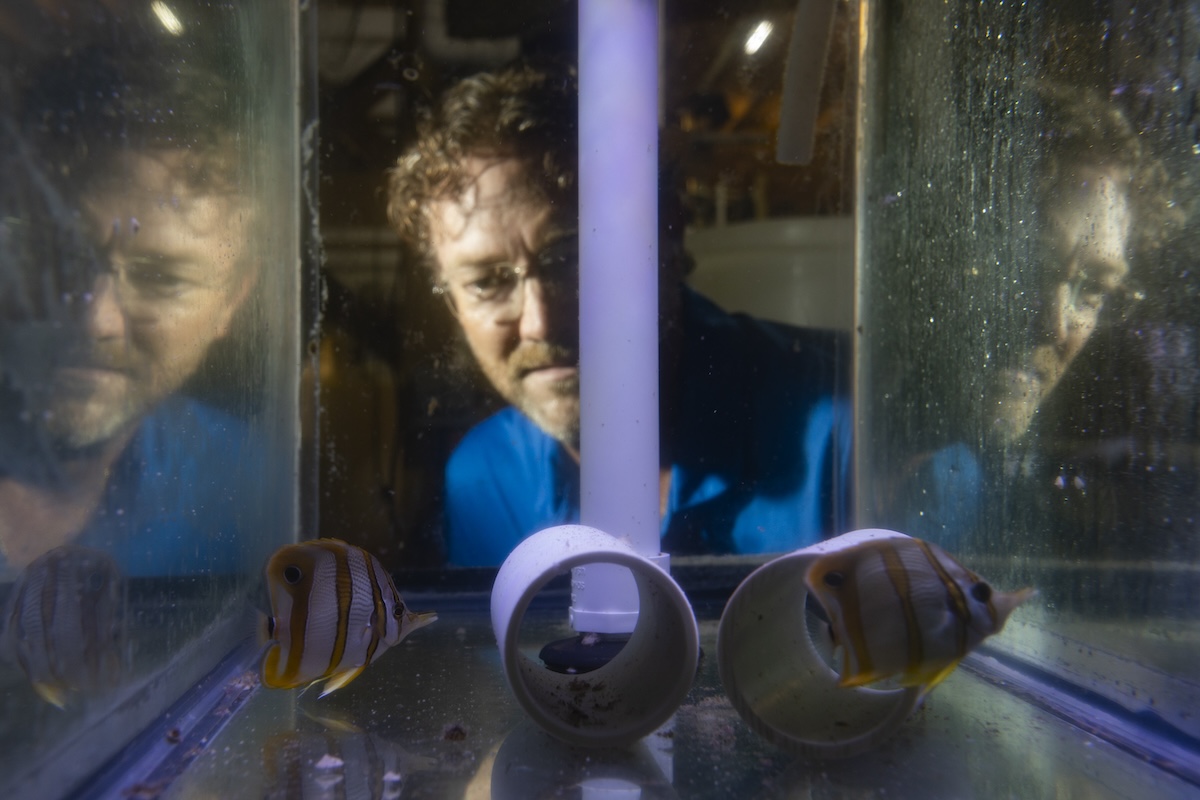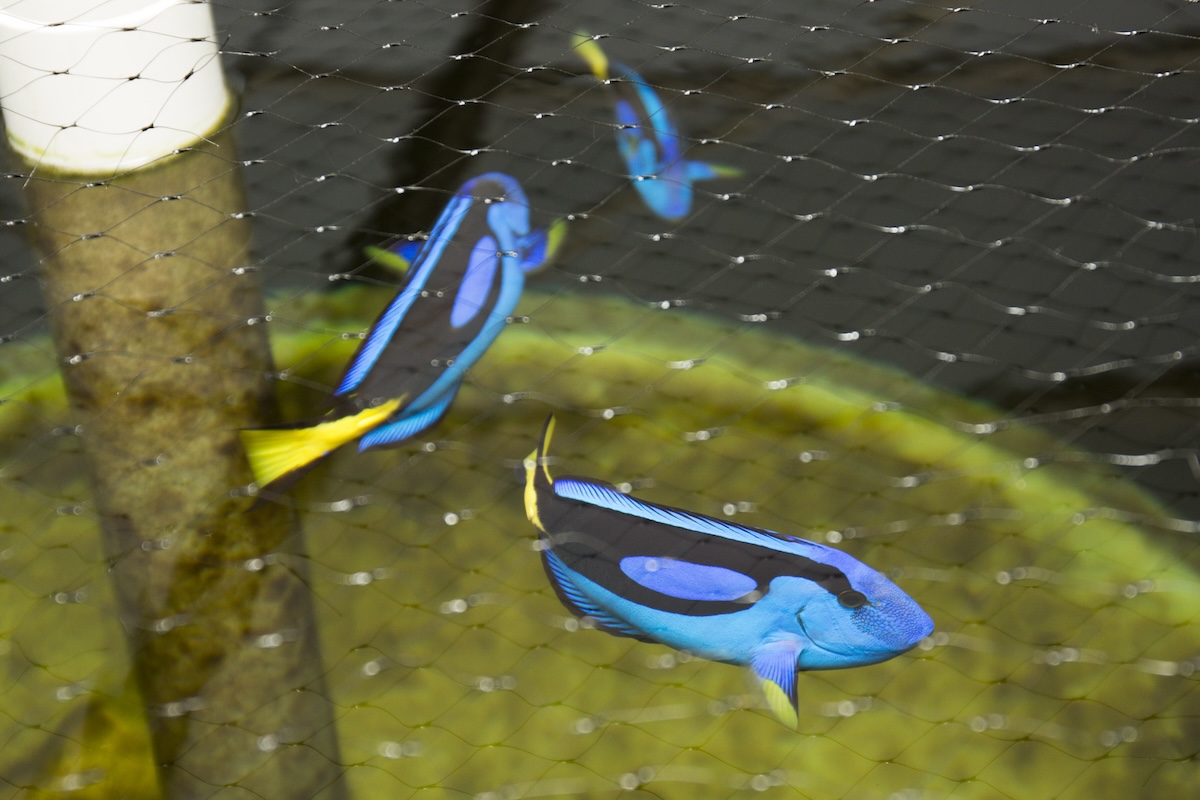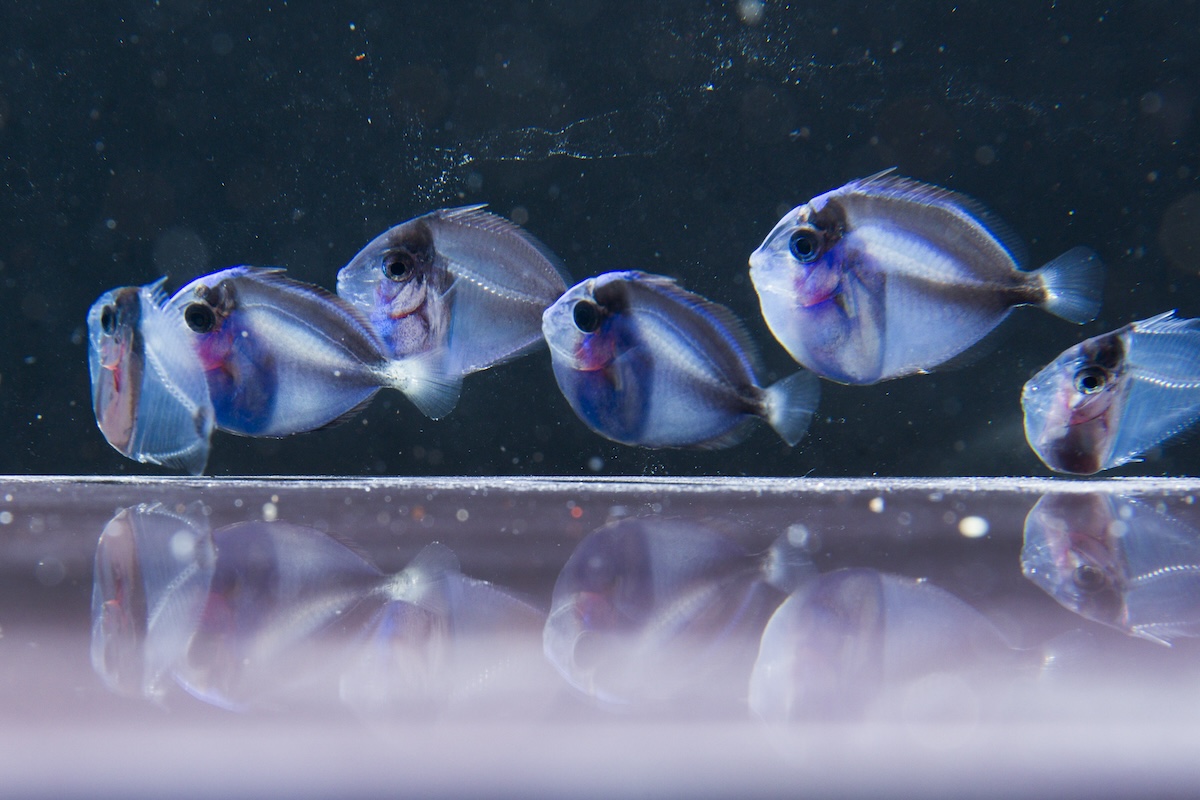Scientists study breeding of pet fish to help protect reefs, fuel Florida’s economy
Florida’s pet fish industry is booming, but many saltwater species in home aquariums are still taken from the wild. Researchers at UF/IFAS want to change that by helping fish farmers breed popular species like clownfish and blue tangs — reducing pressure on reefs while creating jobs in the state’s growing aquaculture industry.
“Aquaculture here decreases the need for wild-caught fish. It is sustainable, and it provides a healthy fish for the aquarium trade,” said Cortney Ohs, UF/IFAS associate professor of fisheries and aquatic sciences in the Indian River Research and Education Center in Fort Pierce.
"We don’t know how wild harvest affects these reefs, so finding ways to raise sought-after marine fish species can contribute to conservation, as well as job creation and economic stimulation." —Matthew DiMaggio, director of the UF/IFAS Tropical Aquaculture Laboratory in Ruskin
They’ve had success stories with raising the notoriously fragile breeds like blue tangs and copperband butterfly fish, and their ongoing research hopes to crack the code of raising more types of valuable fish.

“The mission of the lab is to solve problems and create opportunities,” said Matthew DiMaggio, director of the UF/IFAS Tropical Aquaculture Laboratory in Ruskin. “We don’t know how wild harvest affects these reefs, so finding ways to raise sought-after marine fish species can contribute to conservation, as well as job creation and economic stimulation. What we’re trying to do is develop those methods so farmers in the state have the option to produce them if they want.”
The U.S. ornamental fish market was worth $1.68 billion in 2024, according to a report from Grand View Research – and $172 million in Florida alone. By 2030, that amount is estimated to rise to $2.83 billion.
Marine fish are in high demand across the state and nationally, he said. Demand for marine ornamental fish in the U.S. is expected to grow from 2025 to 2030 at a compounding annual growth rate of 10.5%, according to Grand View Research.

Hobbyists and commercial aquariums are especially drawn to clownfish, hogfish, flame hawkfish and the magnificent fire fish, some of which UF/IFAS has successfully bred already and some which have yet to be raised in aquariums, DiMaggio said.
DiMaggio said TAL’s clownfish research has been especially important due to the huge demand for the fish, especially ones with rare colors and patterns.
One of the biggest successes had been the ability to breed blue tangs – made broadly recognizable by the cartoon character Dory in “Finding Nemo.” Two UF/IFAS aquaculture research groups in Tampa and Fort Pierce achieved that goal for the first time within two weeks of one another, he said.
The blue tang exemplifies why saltwater fish are so difficult to breed, Ohs said.
Each fish has unique breeding needs, especially in terms of food. On reefs, marine fish thrive on live zooplankton, which are difficult to grow for food, he said.

This means researchers had to figure out how to raise specific types of tiny live zooplankton, such as sea monkeys, that each type of fish wants to eat, and then had to figure out what size of zooplankton to feed the fish larvae at specific stages of development. All of this had to happen in a highly specific environment or else the fish larva would not survive.
“It’s very labor- and cost-intensive, which is why it’s important we do this research for the industry to create a blueprint,” he said. “You can’t successfully raise the larvae any other way.”
DiMaggio said a huge factor in UF/IFAS’s success has been due to collaboration with and funding from Rising Tide Conservation and the SeaWorld Conservation Fund, an effort that supports marine ornamental aquaculture research.
“This effort was revolutionary in bringing together the universities, private industry and commercial aquariums to figure out how to go about raising marine ornamental fish,” he said.
